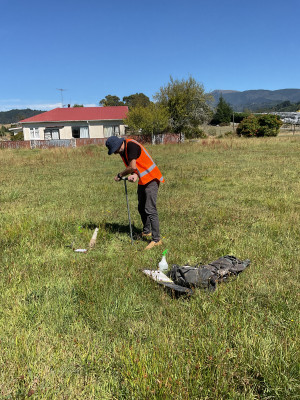For the land, for plants, or the health of people and animals, our soil team are kept busy throughout the year as they carry out many hours of fieldwork in an ongoing quest to find out valuable information about one of Tasman’s key resources.
Soils are important natural assets, contributing to our environmental, economic, and social wellbeing.
Like soils themselves, there are many layers to the work. Staff say monitoring the health of the soil across all parts of the District or protecting our productive land is the most rewarding part of the job.
One example of this is the testing for heavy metal levels in orchards or market gardens – we want to make sure these results are low, so people, plants and animals won’t be adversely affected.
Aligned with Regional/Unitary Councils’ responsibility for monitoring and reporting the State of the Environment in their regions, soil quality monitoring was done last year at 37 sites in Tasman. These cover a range of soil types under different land uses.
Tasman’s soil monitoring programme started in 2000 and has been carried out almost every five years since.
Soil samples are tested for biological, chemical, and physical attributes related to soil functions, which can change in response to the type/intensity of land management practice.
The soil health status of each monitoring site is compared with its previous status to detect any possible improvement/degradation trends over time. This early detection and potential mitigation are crucial as soil degradation is not easily reversible, and rehabilitation can take many decades.


